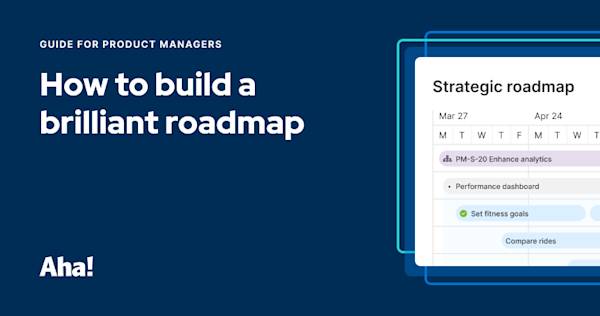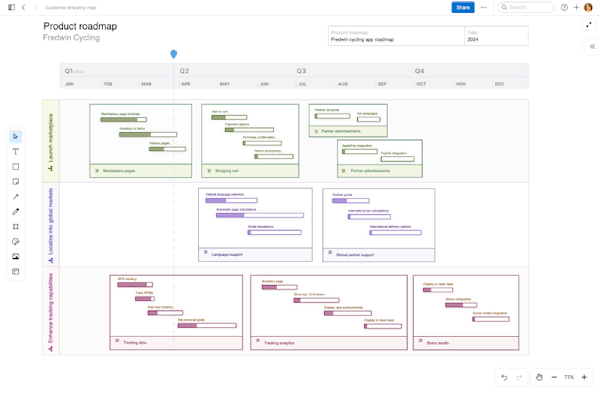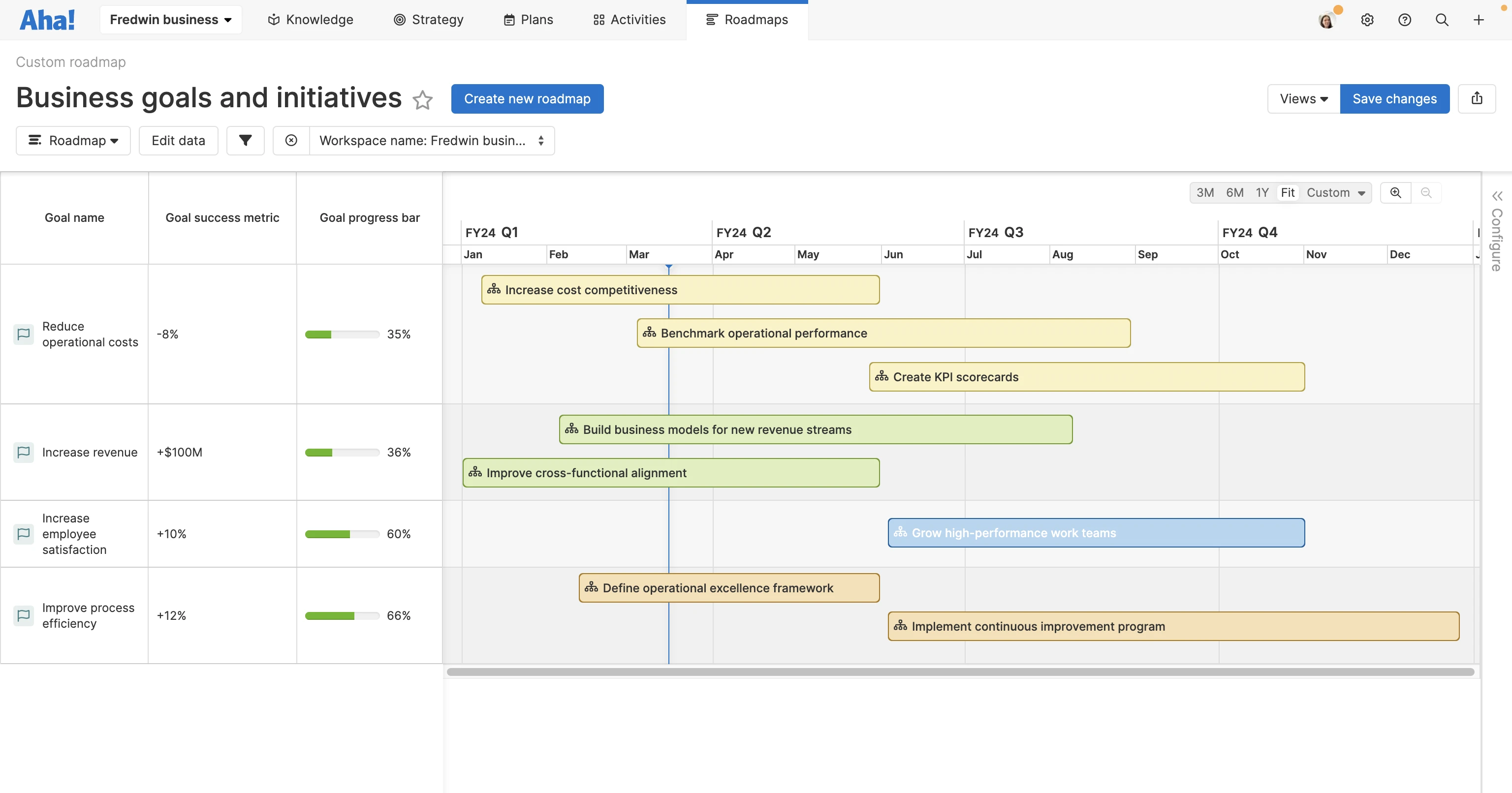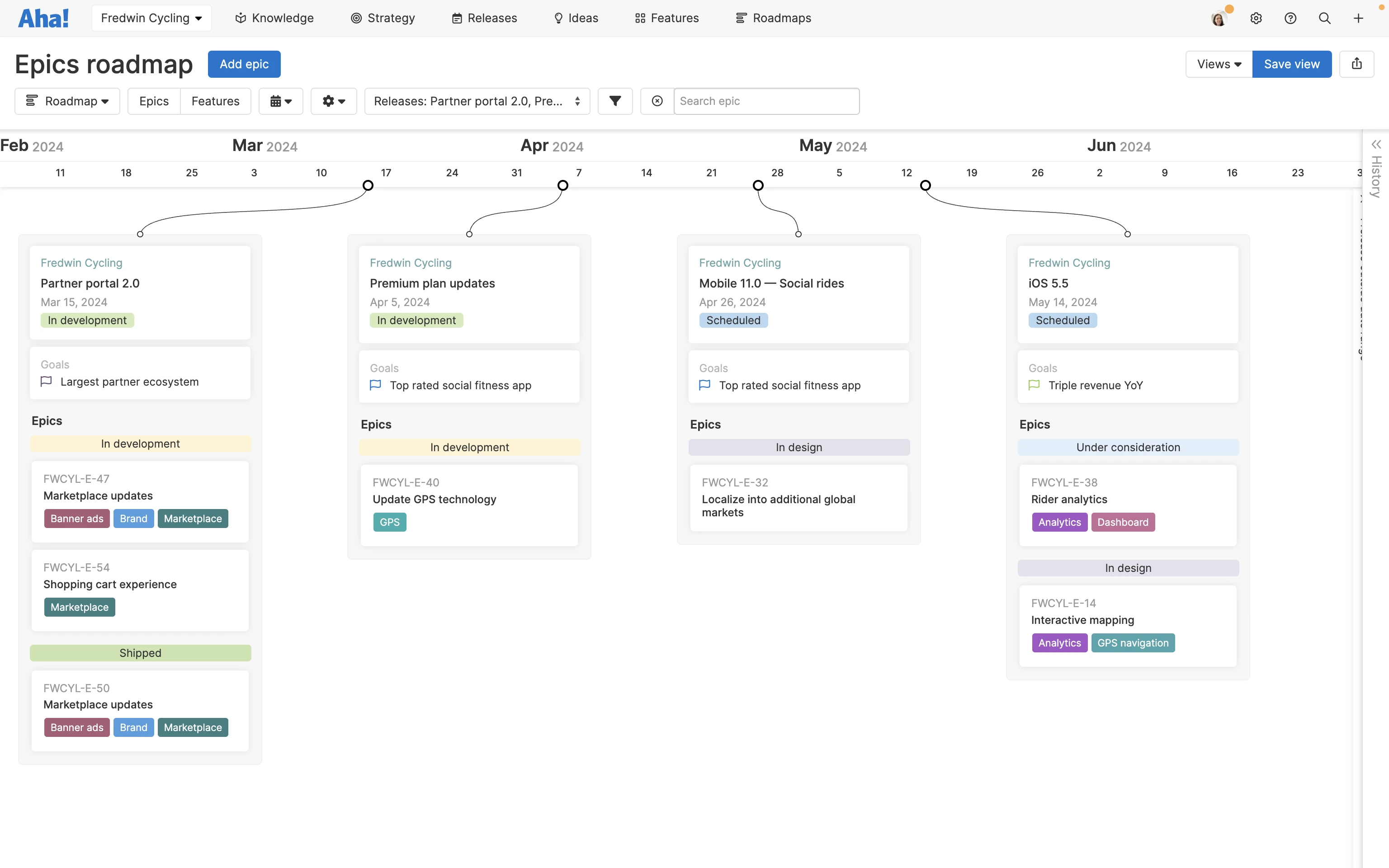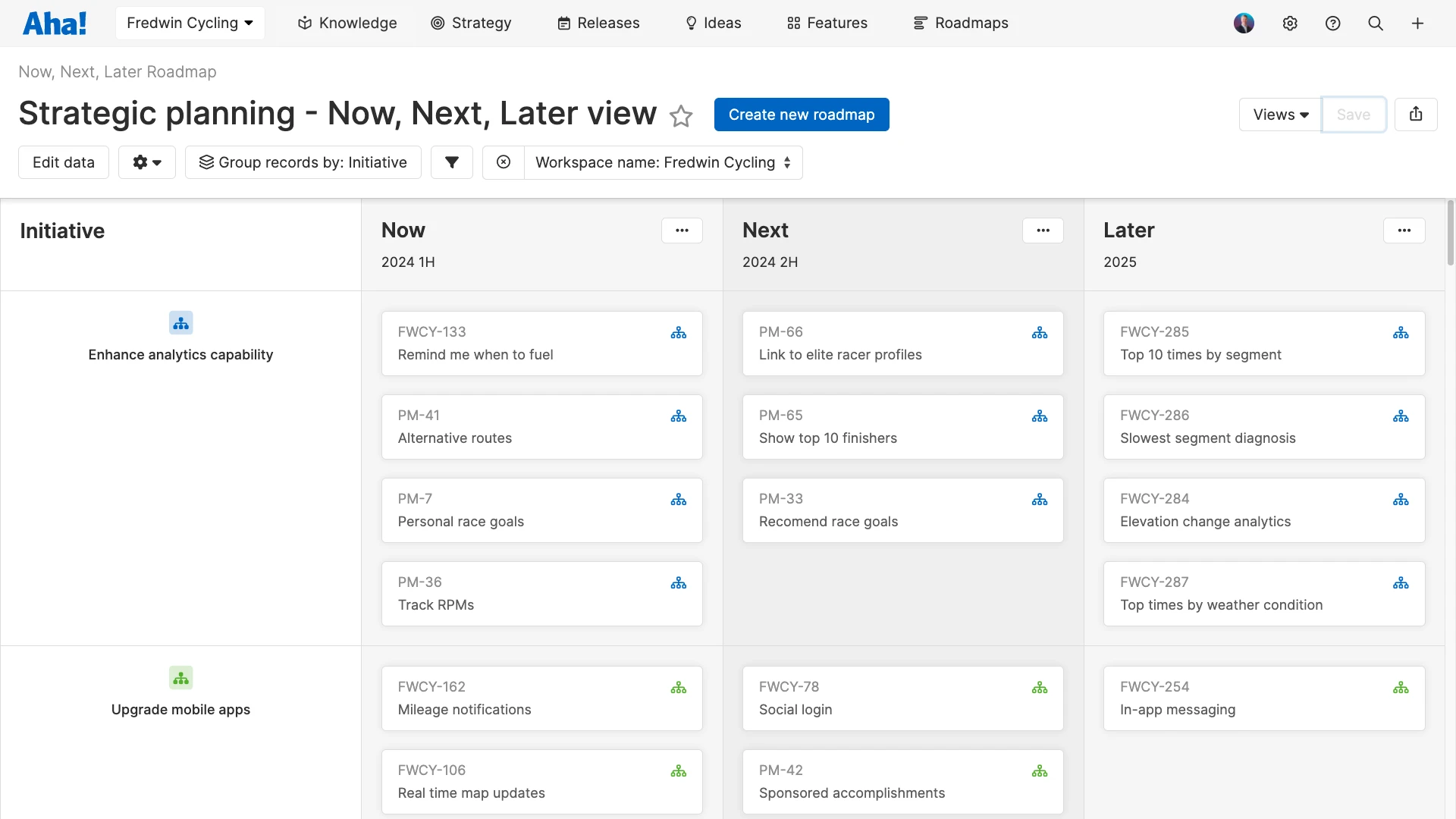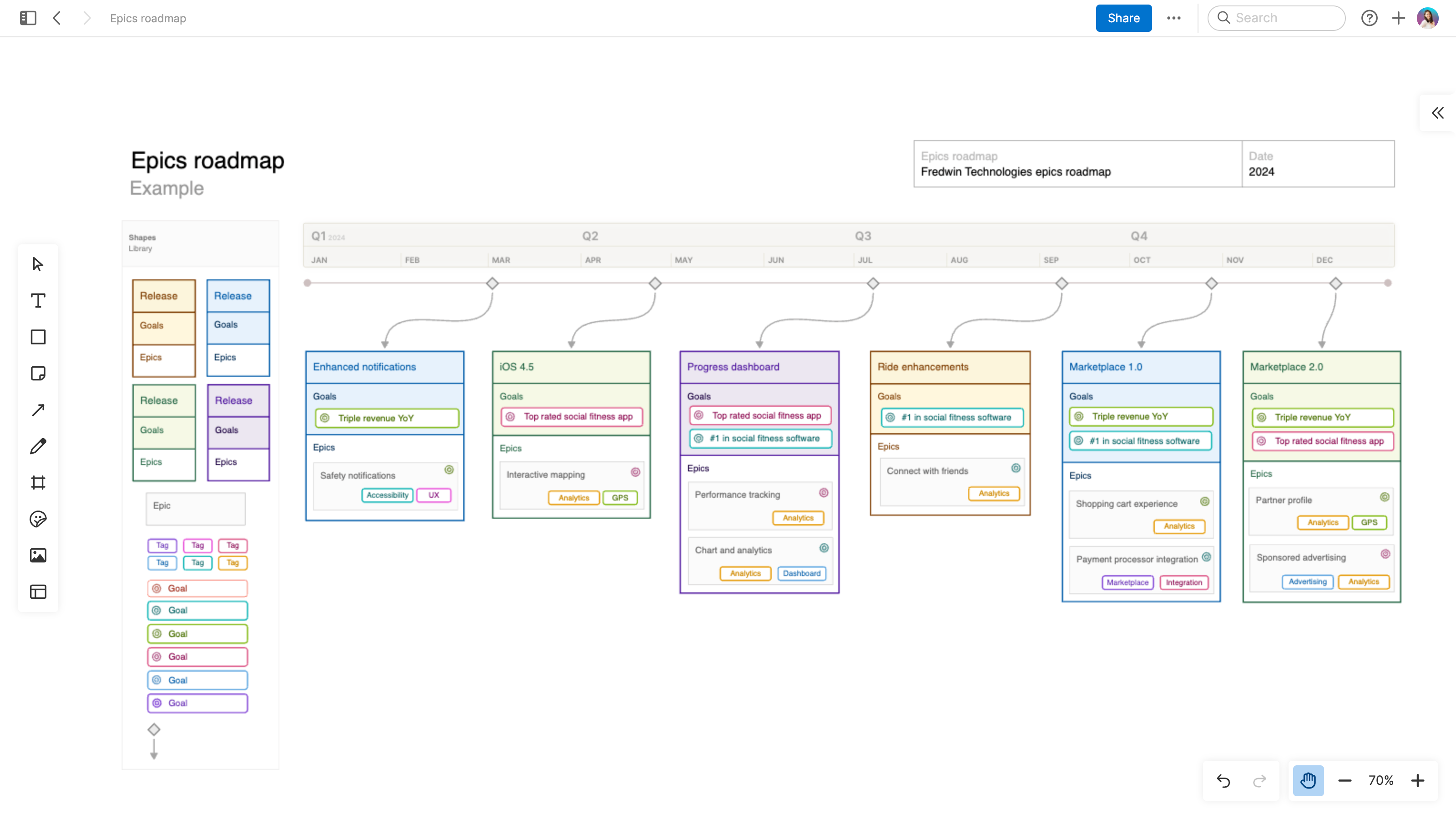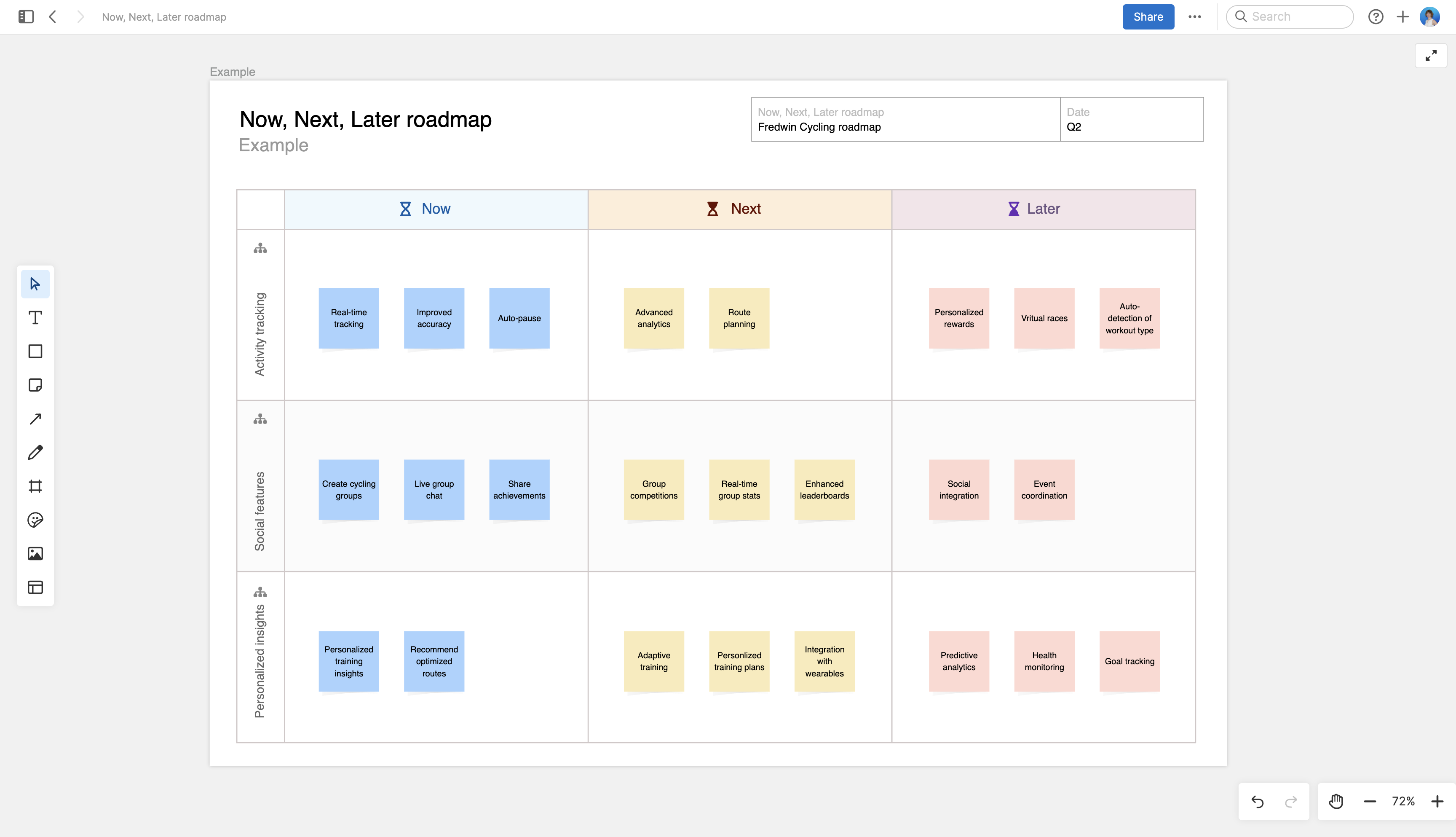Viewing agile work is easy on a Now, Next, Later roadmap in Aha! Roadmaps.
Top
How to build an agile roadmap (step by step)
The way you build your agile roadmap greatly impacts the success of any new launch. Executives, cross-functional teammates, partners, and customers all want to know when to expect new functionality. Sharing an accurate and visually compelling roadmap can help foster transparency and rally everyone around what you want to achieve.
Most product teams already have established workflows for adding bug fixes and general improvements to sprints. So you do not need to include ongoing development on your agile roadmap. Instead, you want to capture a mix of shorter-term efforts that support longer-term goals.
Remember: What truly makes your roadmap agile is your approach to defining each element and your willingness to adapt when plans change. Here are some best practices for building an agile roadmap:
1. Start with product strategy and goals
Strategy is the backbone of an agile roadmap. Without it, it is impossible for fast-moving agile teams to determine whether you are making meaningful progress on the problems you want to solve for customers. Goals help define what you plan to achieve over a period of time, with clear metrics for measuring success. In an agile environment, you will likely set monthly or quarterly goals.
2. Connect goals to initiatives
Initiatives (also called themes) are the bodies of work that will support your strategy and help you achieve your goals. Initiatives are broken down into features and user stories, often spanning multiple releases or epics. When your agile team wants to pivot based on new data or customer feedback, make sure the new plan aligns with your initiatives before you define new features to pursue.
3. Define product features
Distill your large themes of work into features or user stories for your agile roadmap. Development teams can then break down those features into technical requirements and organize them into sprints. Use your product strategy, goals, and initiatives as a guide for which features to prioritize. This will help tell a coherent product story and iterate quickly without veering off course.
4. Gather feedback
Before you begin working against or circulating your roadmap, ask the broader cross-functional team for input. This is critical for building an agile roadmap that is accurate, comprehensive, and realistic. You also need folks' support to gain traction and secure resources. And do not forget your customers, either — for example, agile teams often collect ideas via user interviews, usability testing, and usage data to help inform the roadmap direction.
5. Plan your product releases
Organize the features on your agile roadmap into releases. Your release cadence can be daily, weekly, monthly, or quarterly — it is up to you. Just remember that a release differs from a sprint or iteration in that it delivers a new customer experience (rather than just shipping code) and encompasses all the cross-functional work necessary to do so. In an agile environment, releases are still important because they communicate what to expect and when to teammates and customers.
6. Measure results regularly
As you progress and new information emerges, evaluate and update your agile product roadmap when necessary. For most teams, a quarterly cadence will work. You might need more or less time, but be sure to set regular checkpoints. Evaluate how each release or feature impacts the metrics you care about — this can help you make more informed decisions about what to build next.
Related:
Top
